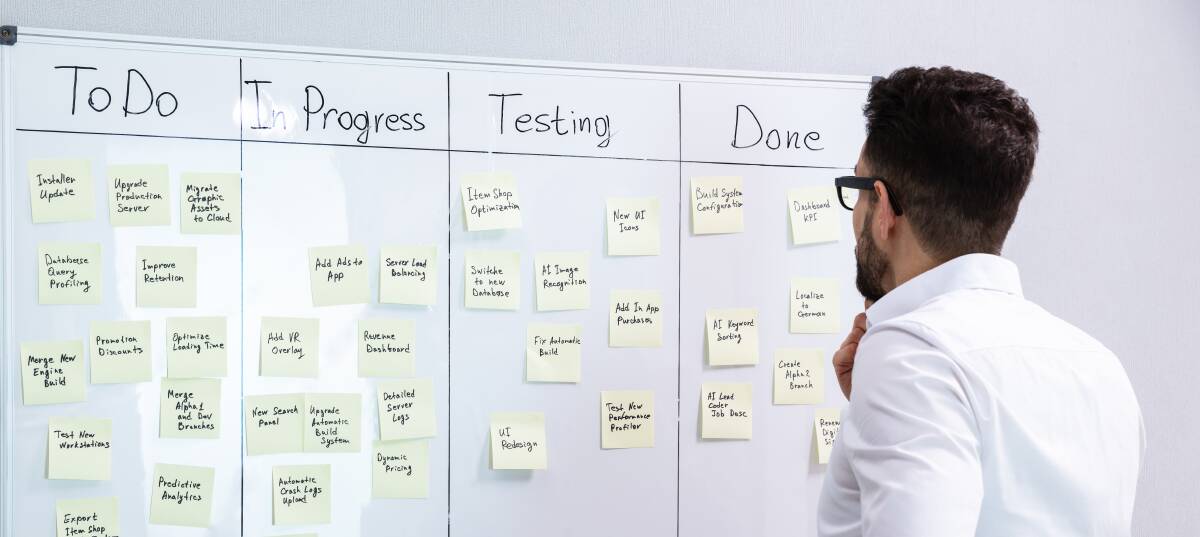Agile vs. waterfall: Which project management methodology is right for you?

This is branded content.
In the world of project management, many methodologies influence the success of your endeavour. They influence how tasks are planned, executed, and achieved. Two well-known methods in this realm are agile and waterfall techniques. Whether you're a successful project manager or someone studying the Graduate Certificate in Project Management, this guide will help you determine the best one for your needs.
The agile methodology
The agile methodology is known for flexibility and emphasises delivering customer value through ongoing enhancements and prioritising people over the process. Essentially, this methodology is rooted in principles that put the customer first and are always open to embracing changes and finishing work in shorter time frames.
Advantages of the agile approach
Business operators pursuing specific goals can appreciate various strengths of the agile approach. This includes the ability to adapt to changes and integrate customer feedback efficiently and promptly. Also, the fostering of creativity and problem-solving among team members is more common in the agile approach because it is more dynamic. All in all, this approach cultivates an atmosphere that leads to better outcomes and heightened stakeholder satisfaction.
When is the Agile approach most effective?
It is most effective when working with clients who change their vision over time and projects with changing requirements. This could be seen in industries such as technology, where changes can be very rapid, so old efforts might need to be updated. It can also be the case even in marketing endeavours where consumer trends change, and adjustments are needed.
Waterfall methodology: A sequential strategy
The waterfall methodology is more refined and step-by-step than the agile approach. The sequential nature of tasks characterises them, and they are almost always carried out sequentially, with each phase being completed before moving to the next one. It follows an organised structure that has defined phases depending on the project, and each phase needs to be finished before moving on to the next one, making it very systematic.
Advantages and Disadvantages of the waterfall approach
The waterfall approach is favoured for its logical and sequential progression, which makes it easy for staff members to follow. Its requirements are generally outlined at the beginning, making it easier to understand the timeline and budgets. However, these strict frameworks might make it difficult and constraining when certain changes are needed during the project.
Where the waterfall method is most effective
The waterfall approach is best for projects where the scope is identified from the outset and only minimal changes are anticipated. This scenario often occurs during manufacturing and construction, where adherence to plans and standards is crucial. Also, some operators prefer the certainty of the schedule because that's how they like to work.
A comparison between structured and dynamic approaches
It is seen throughout many different companies, organisations and individuals. We all approach tasks differently, structured approaches like the waterfall method and dynamic approaches like the agile approach both have their own unique aspects so let's compare them for a better understanding.
Managing changes
The structured approach of the waterfall methodology makes it much more difficult to manage changes as we discussed previously and often means that an entire restructure of plans are necessary before continuing. It can cause a rather high level of disruption within the scope of the project so this needs to be taken into consideration.
When working on the agile approach, you're able to be much more dynamic, and iterations are easily taken on board. This makes the approach more customer-centric and adaptable to dynamic landscapes of business, which seems more common in our day and age. If structure isn't a top priority, then it makes your business much more resilient when times get difficult.
Client engagement
When employing the more structured approach of waterfall methodologies, the clients usually have a better idea of what is happening during the project and know what to expect. This means they can take a back seat during the experience. It is particularly useful when working with those who like to adhere more to schedules.
The other camp is the dynamic individuals, who have a better time engaging with client feedback because they are able to respond immediately. This almost means that the project gets moulded by the customer during the time it is being developed. This might not be suitable for all kinds of projects, but when it works, it can be beneficial.
Mitigating Risks
The waterfall all-or-nothing strategy can elevate risks, especially concerning the deliverable, because it leaves no space for correction or changes to process once risks are discovered. This is the opposite of the agile methodology and step-by-step approach because new risks can be evaluated and responded to promptly. This doesn't mean that either is better, but you will need to account for risks depending on each approach and the kind of project you are working toward.
Summary: What approach is best?
So for the final decision, you will need to consider multiple factors and not only the type of business but the historical data that you can draw from also will impact your approaches. Take a look at your client's preferences, the needs of your employees and what type of project you'll be managing. While agile methodologies are great for start-ups, other industries like pharmaceuticals and construction might need something more structured.
Taking into consideration all these points will help you understand the best methodology to use moving forward. Don't forget that everything isn't completely black and white, and it might be beneficial to move between both approaches depending on the situation. Regardless, make sure you remain organised, and thoughtful and ensure all stakeholders within the project are happy.


